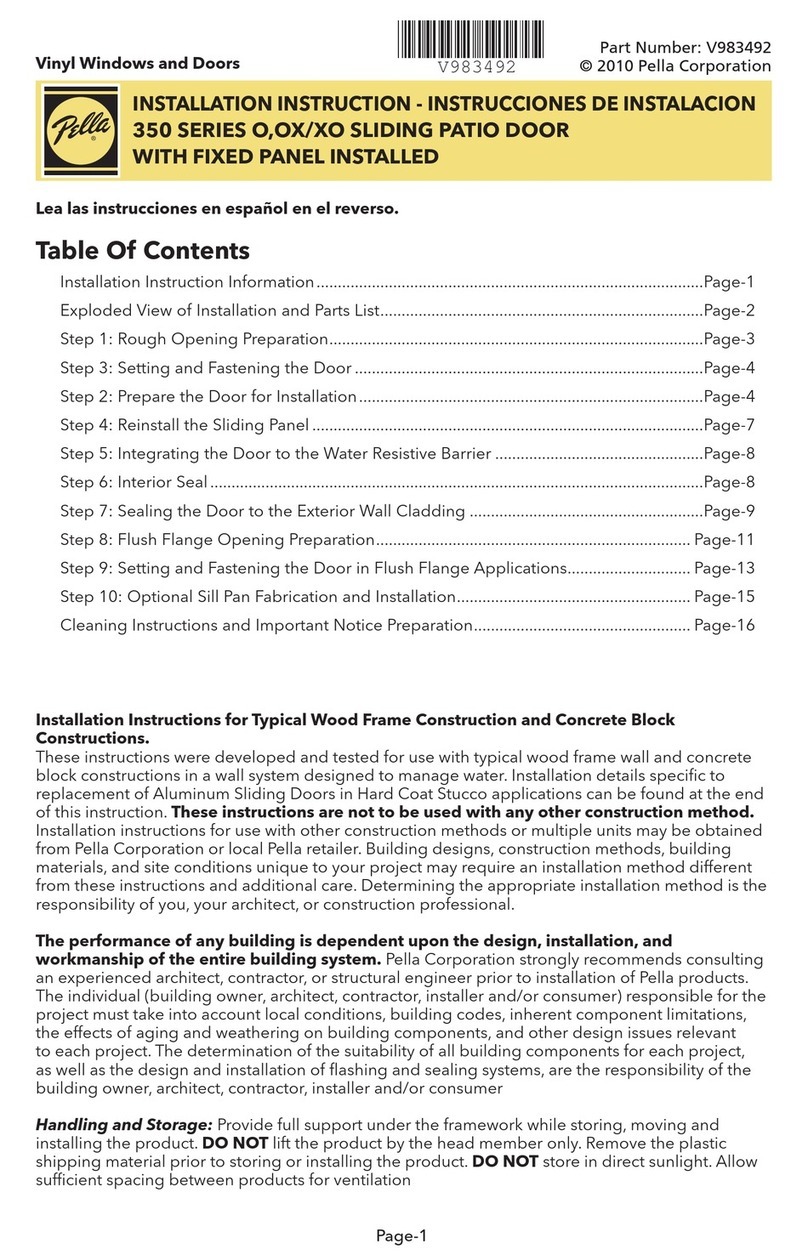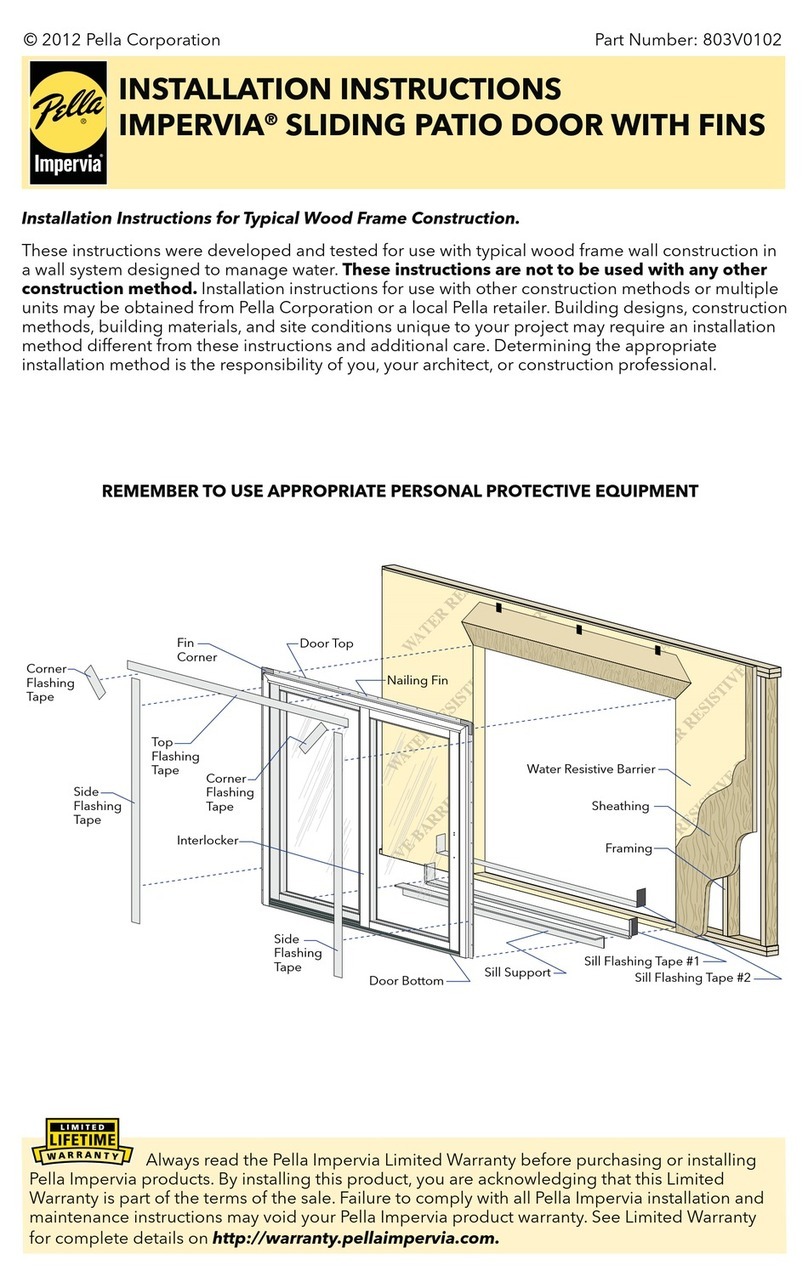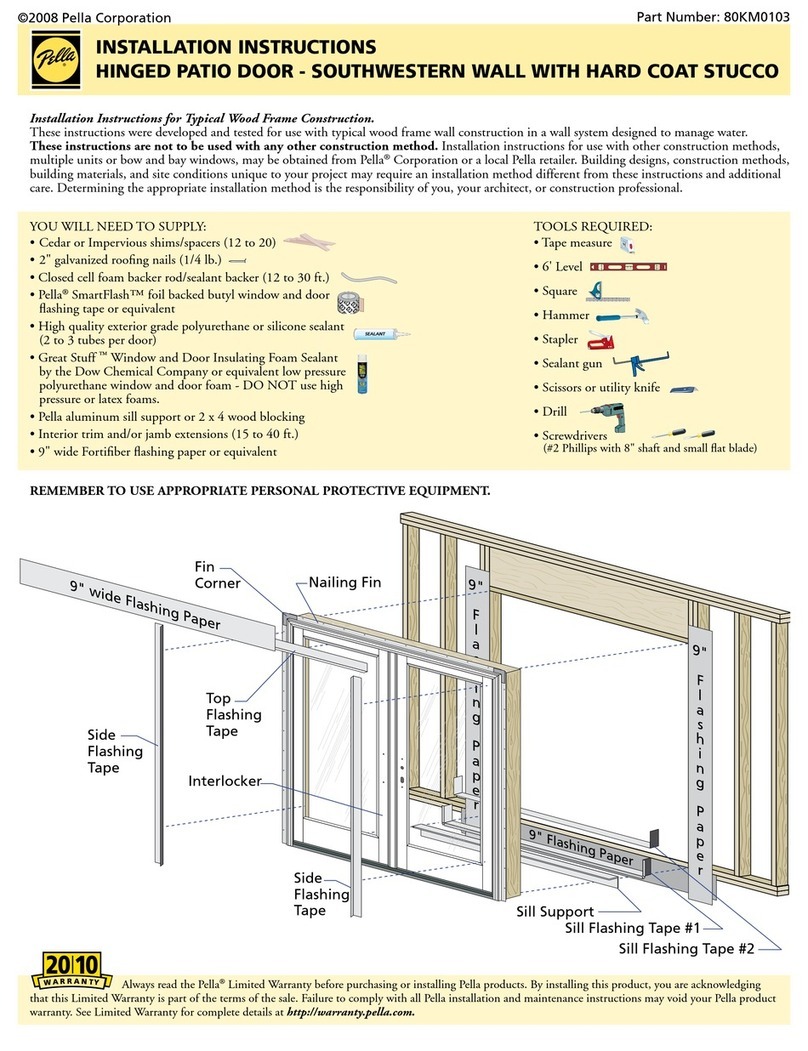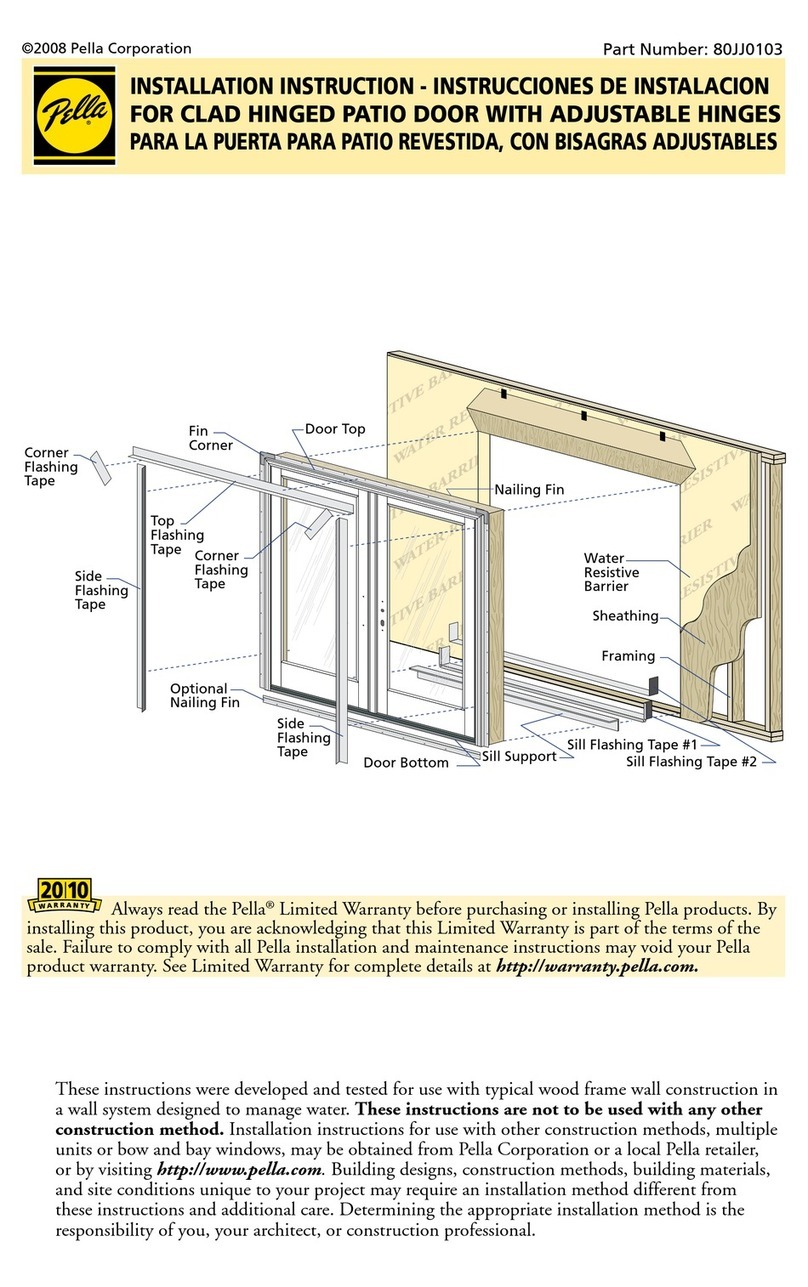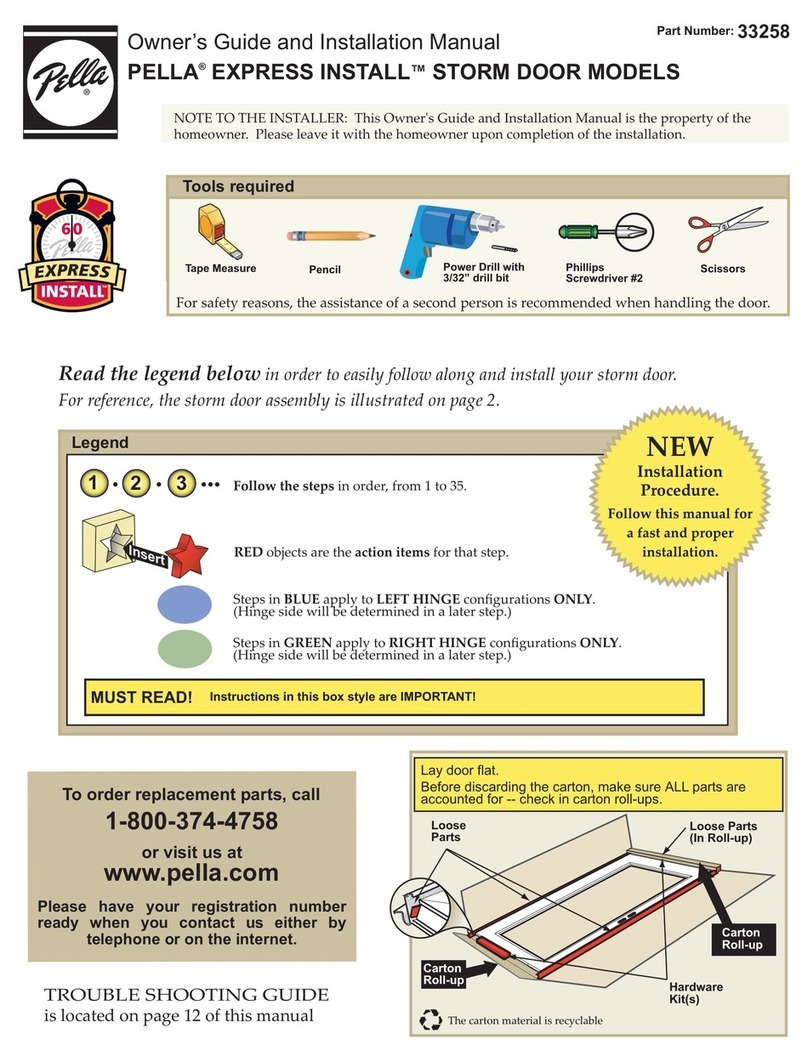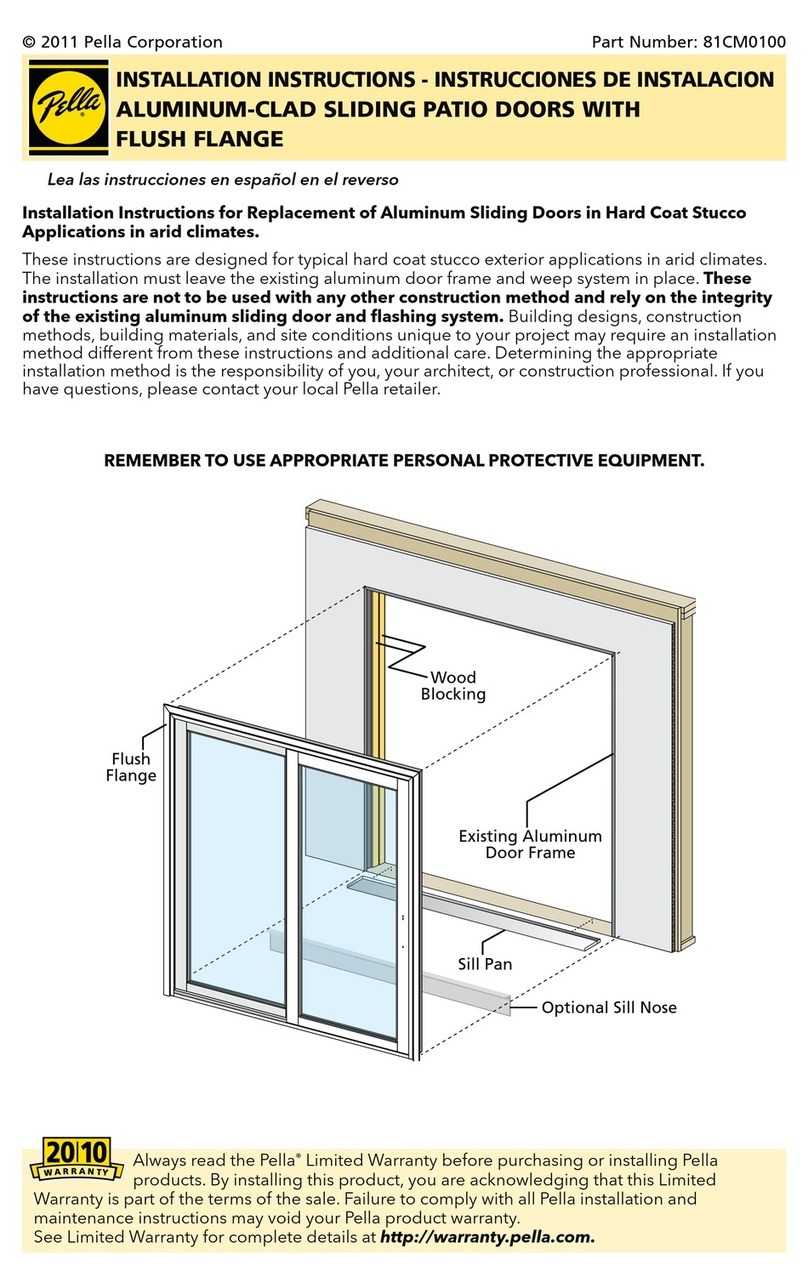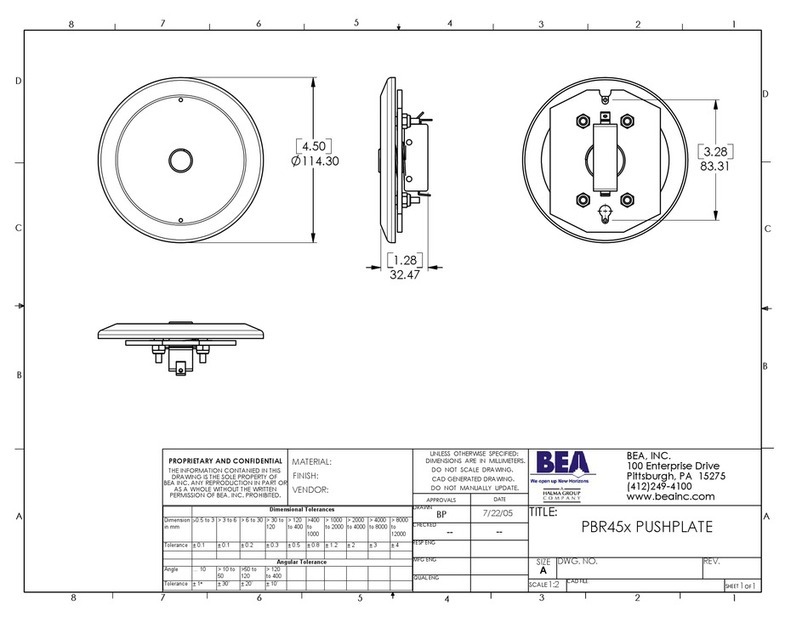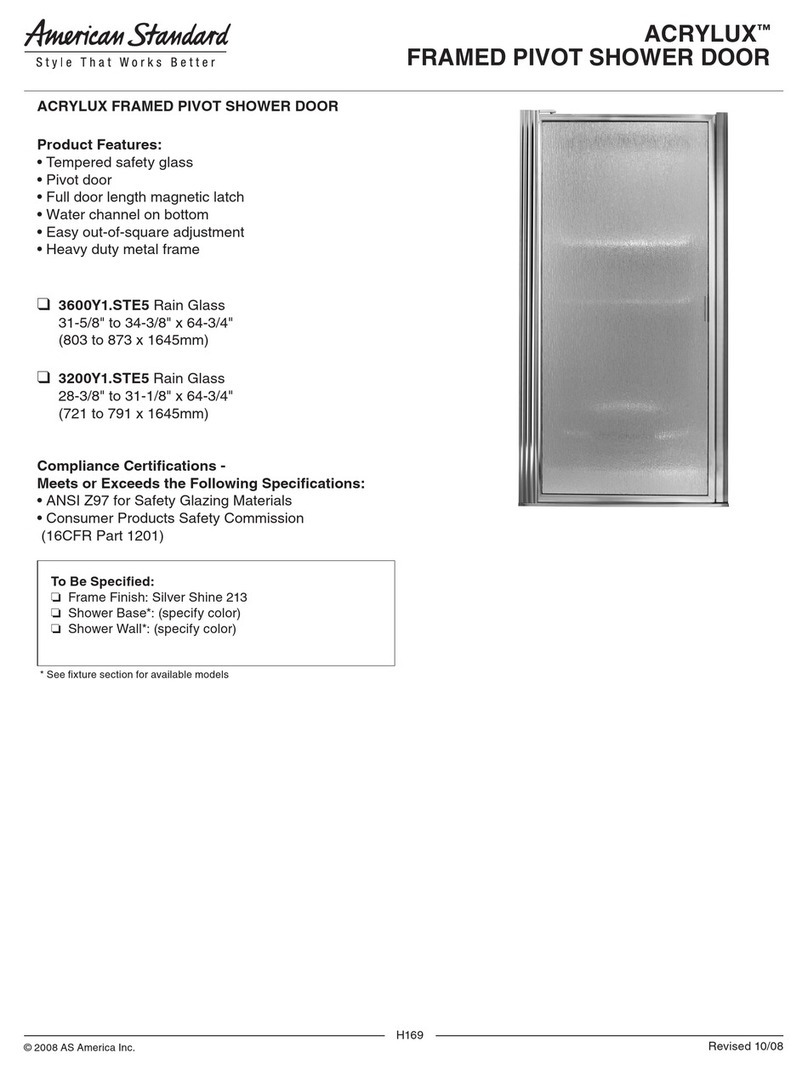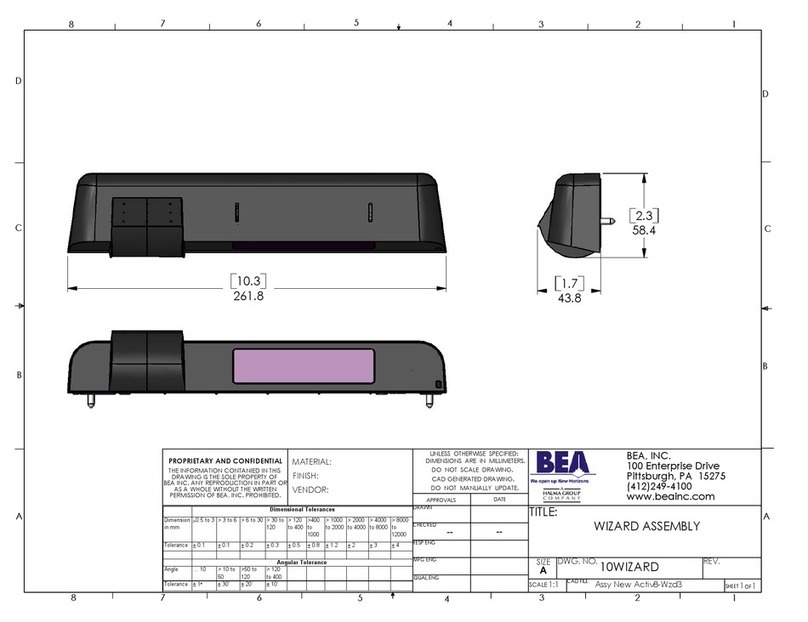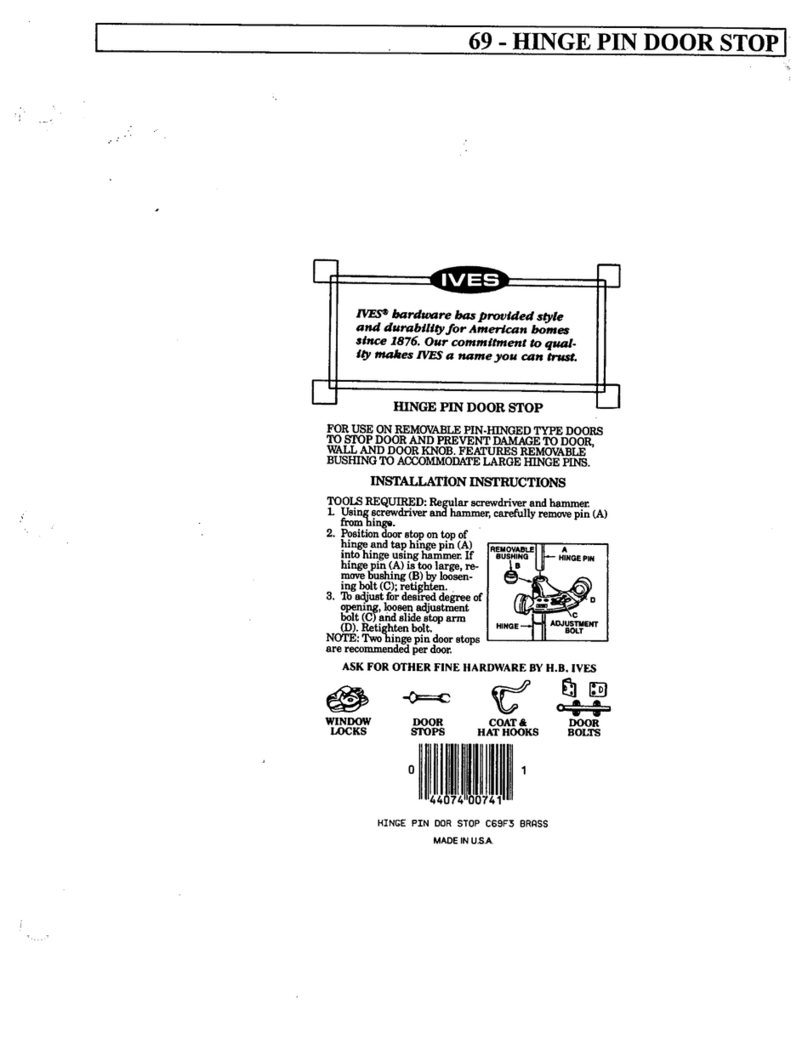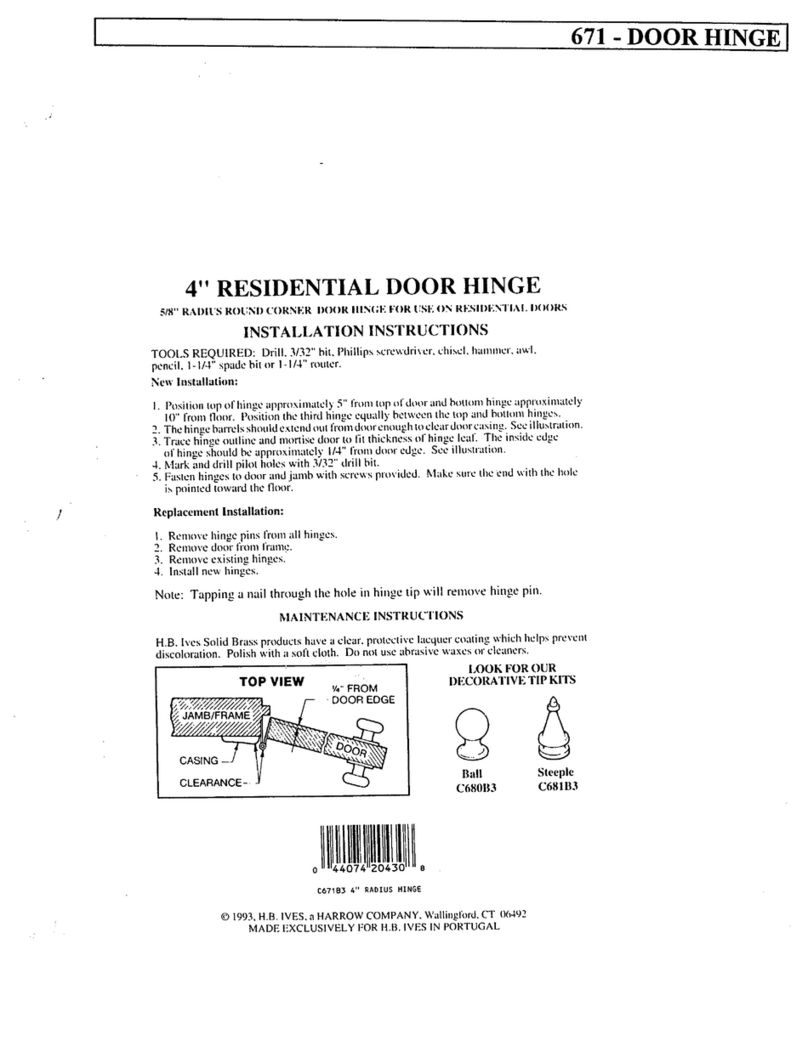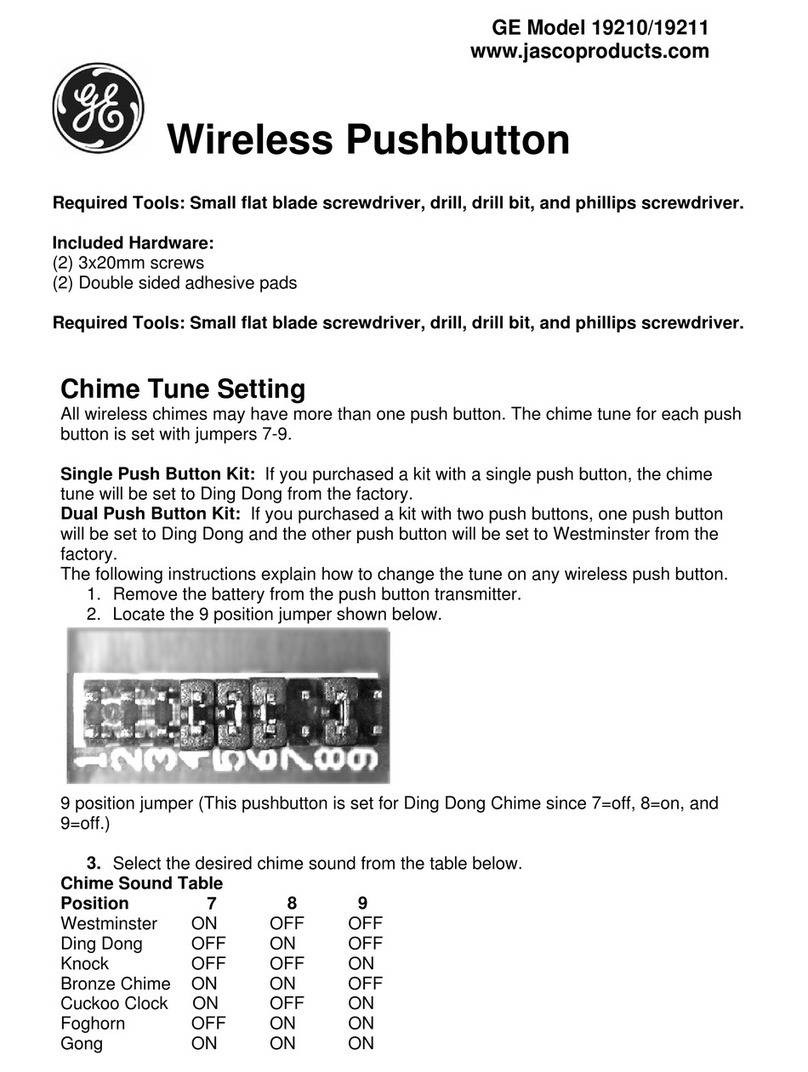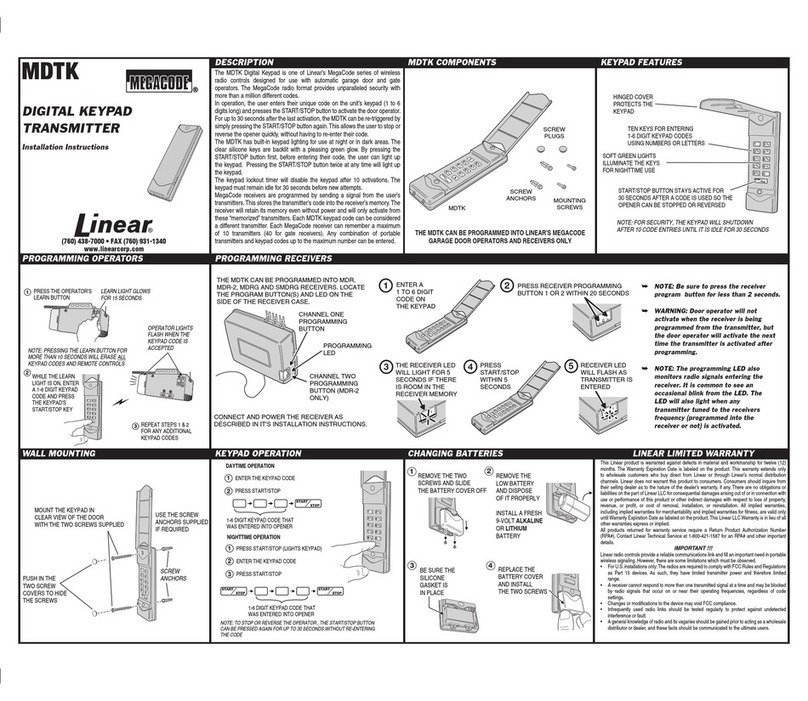N. For Doors with adjustable hinges: The hinges can be used to move the panel side
to side by moving all hinges in the same direction or the hinges can slightly rotate the
panel by adjusting the hinges in opposite directions. Use a T20 Torx wrench to turn
the center screw clockwise (+) to increase the space between the hinge side of the
frame and door panel. Turn the center screws counter-clockwise (-) to decrease the
space between the hinge side of the frame and the door panel .
Note: Do not adjust the hinge with the top and bottom screws loose; this could
force the hinge to adjust beyond its design capability which can cause the hinge
to bind, damage the hinge and/or pull out the screws. A 3/4 turn of the center
screw provides approximately 5/32" adjustment.
O. On doors with a lock strike in the
side, drill a 1/8" diameter x 2" deep
pilot hole into the rough opening
through the two pre-drilled holes in
the frame. One pre-drilled frame hole
is located in the center lock strike
hole and the other is the upper frame
corner installation hole approximately
8" from the top of the door frame
head. Insert a #8 x 3" screw (provided)
into the pilot hole making sure it
passes through the shim and into the
rough opening framing.
Note: This step does not apply to
center latching double doors.
DOORS • ALL DOORS • ALL DOORS • ALL DOORS • ALL DOORS • ALL DOORS • ALL DOORS
4INTEGRATING THE DOOR TO THE
WATER RESISTIVE BARRIER
A. Apply a corner bead of sealant at the point
where the brickmould or flat casing contacts
the wall along the head and jambs. Also apply
a bead of sealant at each end of the head
brickmould.
B. Install the head flashing.
C. Apply a piece of flashing tape
over the head flashing as shown.
&YUFSJPS
"
4A
#
)FBEnBTIJOH
4FBMBOU
4B
&YUFSJPS
%
4D
$
)FBEnBTIJOH
'MBTIJOHUBQF
4C
&
4E
D. Fold down the top flap of the
water resistive barrier. Cut
the water resistive barrier so it
covers the vertical leg of the
head flashing, however does not
lap onto the horizontal leg of the
head flashing.
E. Apply flashing tape to the
diagonal cuts. Cut two pieces of
flashing tape at least 1" longer
than the diagonal cuts in the
water resistive barrier. Apply the
tape covering the entire diagonal
cut in the water resistive barrier
at both upper corners of the
brickmould/flat casing.
3O
3O
3O
~8”
Head
*
A
M
B
